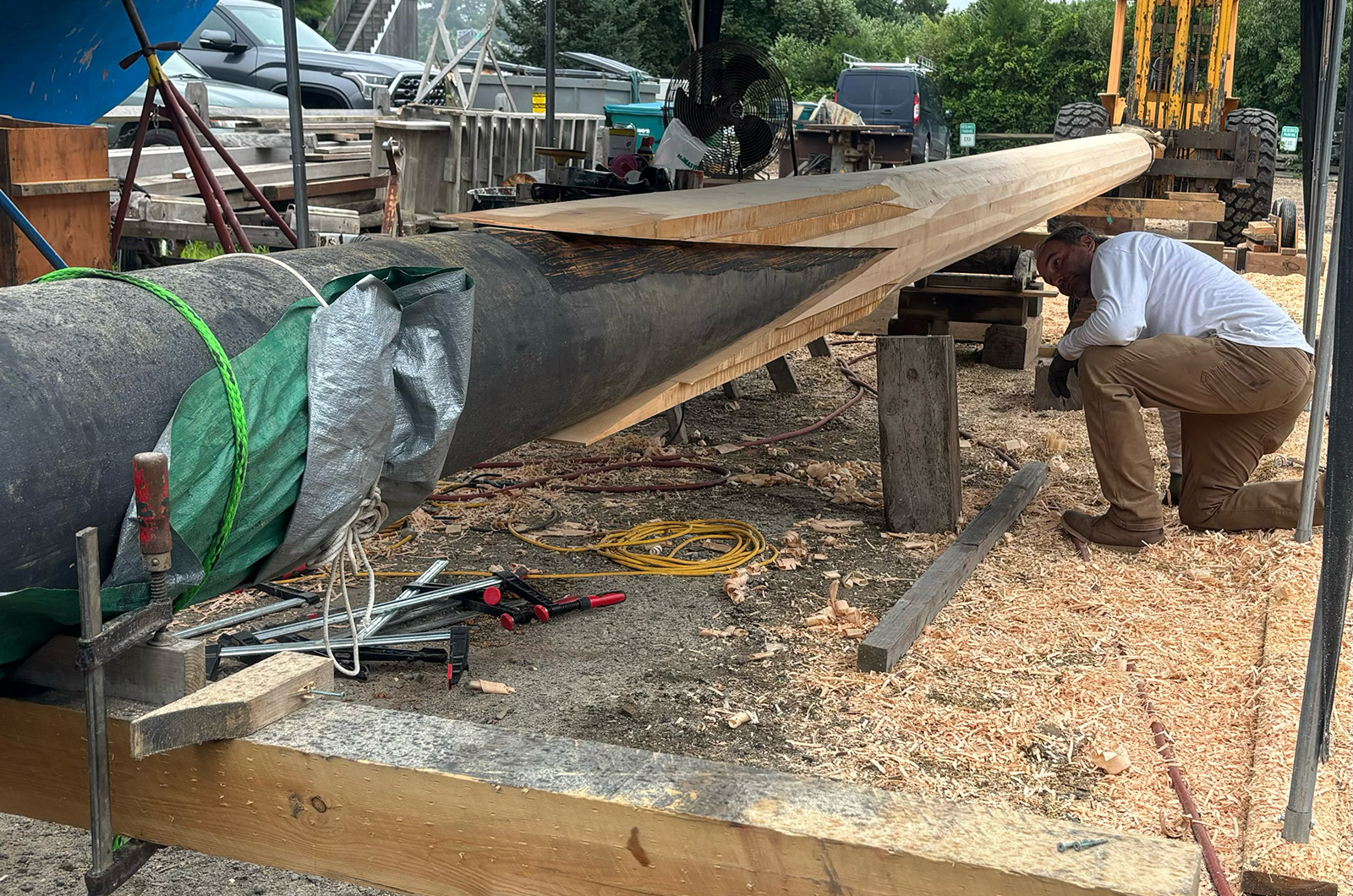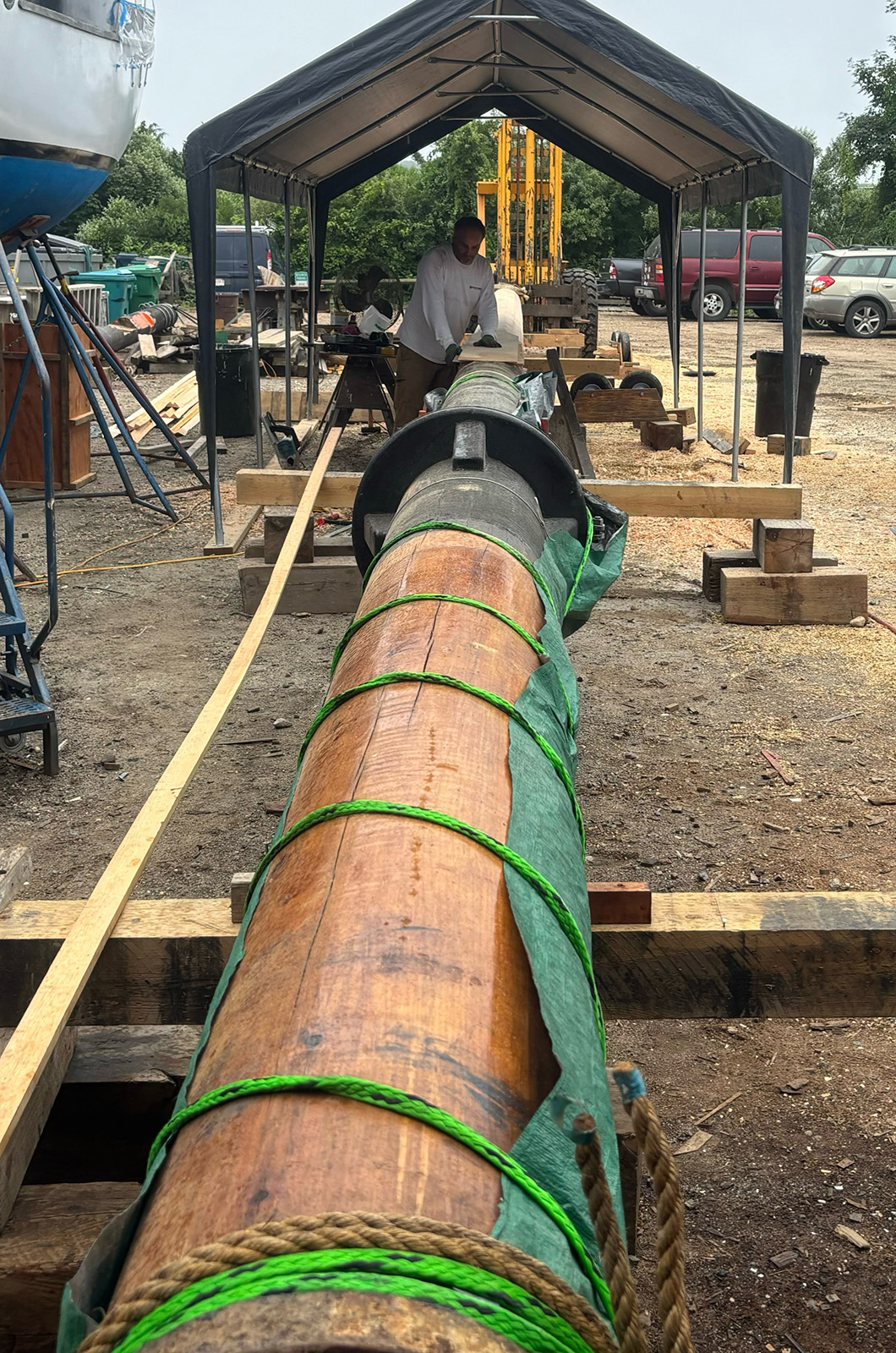Antonio Salguero first visited Vineyard Haven as a child in the late 1970s. At the time, his uncle Ross Gannon was a young local carpenter with a house moving company. Antonio would hang around job sites during the day; at night he and Ross lived on the harbor aboard Ross’s antique sailboat.
Shenandoah was a new boat then. Its designer and captain, Bob Douglas ran charters with his children on board. Antonio was close to their ages, and invited to come along for at least one trip.
“It was pretty nice,” Antonio said, while recalling those experiences earlier this summer. “They kind of noticed I was by myself,” he said. “It was awesome getting to do a trip on board that boat.”
Over successive summers Antonio would return to Vineyard Haven where he eventually worked for Ross at his new business, a boatyard and marine railway that specialized in wooden boats. Today Gannon & Benjamin Marine Railway is a cultural institution where people practice skills — designing and building custom boats from rough lumber — that are lost in many harbors around the world.
After he graduated from high school, Antonio went to Maine Maritime Academy where he studied boat design. For the next five years he built boats as part of the crew at Gannon & Benjamin, then in the early 1990s, relocated to Port Townsend, Wash., where he raised a family. For work he built and designed boats.
His recent project has been the schooner Alabama, repairing the masts of the tall ship that remains in the care of the Douglas family.
At 68 feet long and over 16 inches in diameter, each of Alabama’s masts are much larger than telephone poles. This summer Antonio replaced over half the length of both the fore and the main.
“I’ve built a lot of masts, but never any so big,” Antonio said.
Both masts were made of solid white pine logs from Connecticut when Captain Bob hired Gary Maynard to restore the boat in the mid-1990s. For Antonio’s repair job, Gannon & Benjamin tracked down a truckload of two-inch white-pine boards.
Laminating the rebuilt sections of the masts from smaller boards is more labor intensive than using solid logs, but it should make them stronger and more resilient to the adverse long-term effects of life out in the weather. Solid spars are vulnerable to rot because when checks open up they run into the center of the timber.
With a laminated spar, Antonio said, “Water can only go as far as your next glue line.”
The stack of pine, four-feet-high, eight-feet-wide and sixteen-feet-long, came from Liberty Cedar in Rhode Island, but they kept their source secret from the shop. The boards were exceptionally tight grained and relatively free from knots.
Using a portable sawmill, triangles were cut out of the ends of the boards so they could be attached together to make up the length of the repairs. The repaired sections were laminated together in eight layers with epoxy glue. Antonio built a rotisserie out of plywood and wheelbarrow tires so he could work the rough square sections of mast into round shapes.
It was intimidating to roll the assemblage at first, but once the corners were cut off, Antonio could roll it by himself.
When the repairs were finished but before the masts were back in the boat, Antonio had to head home to Port Townsend. After working through two straight weekends, he wanted to see his sons.
“It would be great to see the masts go in, but I’ve gotta check in over there,” Antonio said happily.
On August 14, a crane and barge from New Bedford was towed over with a tugboat to stand the newly repaired masts up in the boat. With help from his brother Robert and his patient crew, Capt. Jamie Douglas was able to rerig the boat and have it sailing the next day.
Alabama is available to charter for events and will continue to take individuals on daytime and sunset sails until Sept. 22.






Comments (1)
Comments
Comment policy »